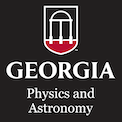The presentation will briefly discuss our multidentate approach to create uniform metal nanoparticles by tailoring the core-ligand interactions. Exciting electrochemical and optical activities from sub-2-nm Au nanoparticles are reported. The talk will focus on novel mass transport behaviors through a single nanosized pipette or pore, analyzed by time and frequency domain electrochemical measurements and classic simulation. As the pore dimension miniaturizes and approaches that of a single bio-macromolecule, single molecule activities inside the mass transport limiting region perturb the ionic transport current thus be detected. Correlated with the well-known ion current rectification effect observed from various nanodevices, multitime-constant transport processes have been discovered. The knowledge allows us to differentiate the respective contribution to the current signal from substrate charges (coulomb interaction with fixed surface charges) and nanogeometry (volume effect). The transference number of cation and anion, and surface charge density of individual nanodevices, have been determined by combined experiments and simulation.
Events Calendar View
-
NanoSEC Seminar
Mar 25, 2011
Metal Nanoclusters Tailored by Interfacial Bond Structures and the Transport at Single Nanopores
-
CSP Lunch Seminar
Mar 29, 2011
Parallel Wang-Landau Simulation of Water Clusters
-
Departmental Colloquium
Mar 31, 2011
Novel Photorefractive Materials for Beam Coupling Applications
This presentation will be centered around the photorefractive effect, particularly, photorefractive beam coupling. Over the years, we have improved beam coupling in various geometries using novel photorefractive materials. Both inorganic and hybrid (organic-inorganic) photorefractive materials will be discussed, as well as the methods of improving these novel materials to give more efficient beam coupling. Techniques to increase the space charge field and the optical gain will be explored for inorganic systems; the enhancement of the beam coupling gain in liquid crystal photorefractive hybrids through the use of ferroelectric nanoparticles will also be explored, with an emphasis on the production and characterization of 9 nm ferroelectric nanoparticle – a size that has never been achieved in the past.
-
CSP Lunch Seminar
Apr 7, 2011
Local Approaches to Electrostatics
-
Departmental Colloquium
Apr 7, 2011
Testing the Limits of Complex Organic Chemistry in the Interstellar Medium
Fundamental biological molecules such as amino acids and sugars have been discovered in meteorites, but none of these species have yet been definitively detected in the interstellar medium (ISM). While both the number of detected interstellar molecules and their chemical complexity continue to increase, understanding of the processes leading to their formation is lacking. Recent chemical models suggest that organic radicals formed during the photolysis of interstellar ices provide the building blocks for the larger organic molecules found in star-forming regions. In order to investigate these interstellar prebiotic chemical pathways, we are developing a terahertz (THz) cavity ringdown spectrometer to study the unstable, reactive molecules that are key reaction intermediates. In this talk, I will present the initial results of the instrument development and spectroscopic studies. I will also outline our future plans for this instrument and the link to our ongoing projects in observational astronomy and astrochemical modeling.
-
NanoSEC Seminar
Apr 8, 2011
Investigating the Interaction of Ultrashort Laser Pulses with Optical Materials and Components
Modern table-top laser systems are capable of generating ultrashort optical pulses with sufficiently high intensity to induce nonlinear optical effects in many of the materials (including air!) that are used in the construction of optical components and systems. In this talk we describe how two of the techniques of computational optics can by provide insight into the complex dynamics that occurs at high intensities.
Firstly we describe how a modified 3+1D nonlinear Schrodinger equation coupled to a rate equation for the plasma density in the dielectric material can be used to simulate pulse propagation and plasma formation in fused silica. In particular we analyze the influence of pulse-shape and beam geometry on the formation of the electron plasma and hence modification in the bulk material. Secondly we use the finite difference time domain (FDTD) technique to simulate ultrashort optical pulse propagation through
dielectric filters.
Page 20 of 121, showing 6 records out of 723 total, starting on record 115, ending on 120


